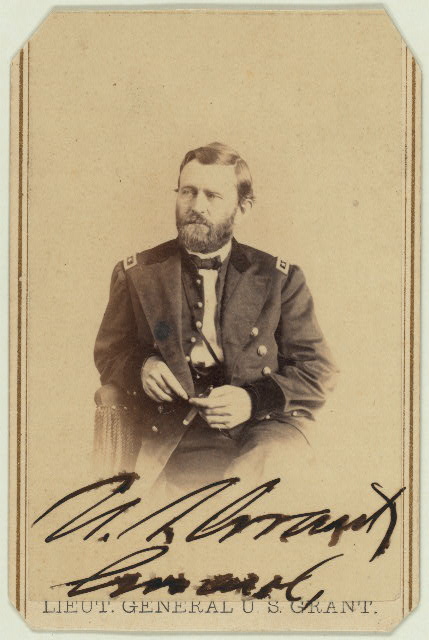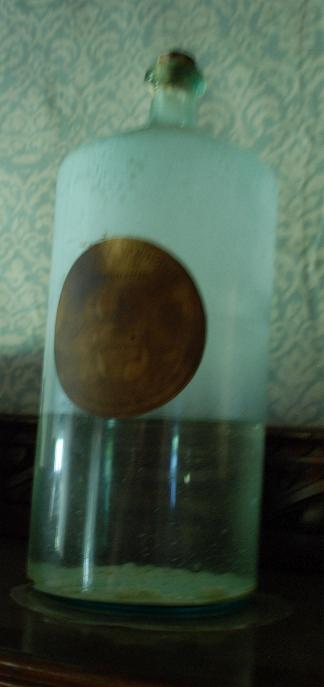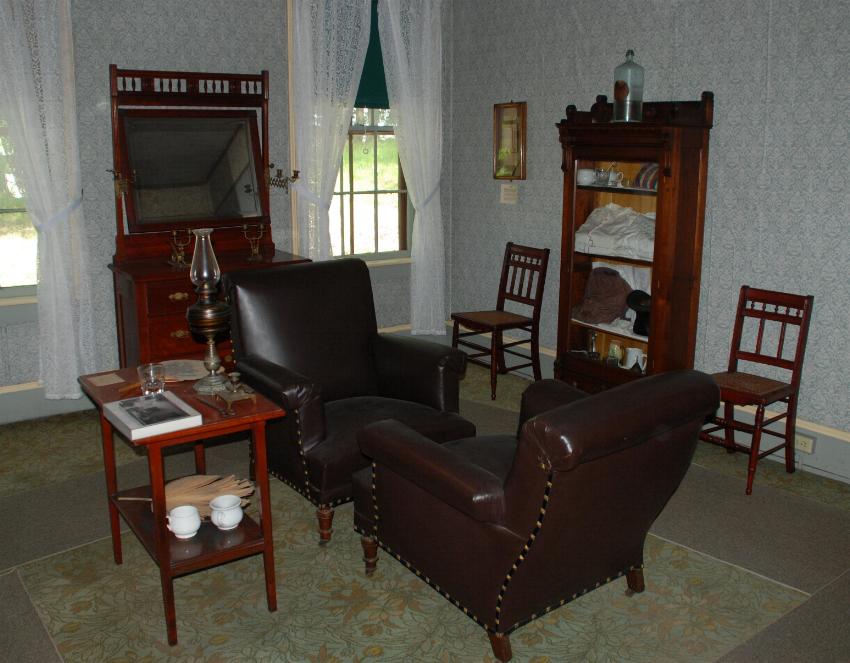The city of Saratoga Springs is
located a few miles south of Mount McGregor, and it was here that the famous
and well-to-do would sample the healing powers of the mineral waters, as well
as wager and attend the horse races and generally participate in the high
society of the city. Mount McGregor offered visitors various walking trails
and spectacular views of the mountains and the ďSpa City,Ē as well as its cool
breezes.
Mount McGregor got its name from
Duncan McGregor, a business and lumberman who purchased a thousand acres that
included the summit and eastern section of the mountain. Using lumber cut
from his own sawmill, Duncan built a small hotel on the summit and named it
the Mountain House. It opened to the public in 1878 and soon became a popular
destination for people desiring to leave the hot cities and retreat to the
cool breezes and beautiful scenery that the mountains, lakes and Hudson Valley
provided.
Because of the popularity of the
area, W.J. Arkell, and Joseph W. Drexel of New York, saw Mount McGregor as the
perfect area to build an Adirondack resort. They formed the Saratoga and
Mount McGregor Improvement Company, and began work on the Saratoga, Mount
McGregor and Lake George Railroad. This railroad was completed very quickly,
taking only three months, and by July 1882 was transporting visitors up the
mountain. Later, in 1883, the original Mountain House was moved a few hundred
feet south of the summit to be used as a boarding house, while work began on
another larger summer hotel that became the Balmoral. In the summer of 1884,
the Balmoral, consisting of 300 guest rooms, opened to great reviews. Because
of its popularity, other attractions were added, such as an elegant
restaurant, an art gallery, and the railway which brought visitors directly to
the door. Mount McGregor was now competing directly with Saratoga Springs as
a popular vacation spot.
In the spring of 1885, Joseph Drexel
purchased the Mountain House built by Duncan McGregor and planned to renovate
it for use by he and his family. While a happy time for Drexel, it was a
terrible year for Ulysses S. Grant and his family. By the summer of 1884,
Grant had learned that he did not have long to live, being diagnosed with
inoperable throat and tongue cancer. Combined with this horrible news, a few
years earlier, Grant had invested all his money through his son, with the Wall
Street Firm, Grant & Ward. This investment turned out to be a Ponzi scheme
whereby the partner (Ward) had embezzled over $250,000 of U.S. Grantís money,
completely wiping him out. Now broke, Grant knew that the only way to provide
for his wife, Julia, and his family, was to write his memoirs.
Originally, Grant did not desire to
write his memoirs because he believed it was wrong to profit from what was
such a horrible war, the American Civil War. Also, the fact that he could be
considered a literary man was furthest from his mind. With this though,
Grantís Personal Memoirs evolved from articles that he had agreed to
write in the publication, The Century as part of a series on the Civil
War. He had agreed to write four articles covering the battle of Shiloh, the
Vicksburg and Wilderness campaigns, and Appomattox, for each of which he was
to be paid $500. Consequently, for this, he began writing in June 1884, and
by July 1, 1884, he had sent a completed draft of ďShilohĒ to The Century.

With talk of writing a book, Roswell
Smith, president of the Century Company, with Robert U. Johnson, editor of
The Century, wanted Grant to sign a contract with them for his memoirs. On
October 22, 1884, the day Grant learned that he had cancer; he visited the
Century office telling them that he desired to sign a contract with them. A
contract was drawn in November 1884, offering Grant a ten percent royalty on
expected sales of 25,000 sets (Volumes 1 & 2).
Grant was considering the offer when
his friend, Samuel Clemens (Mark Twain) heard about the book. He advised Grant
the Century offer was not good enough. Twainís company was called Charles L.
Webster & Co., under which he published his own works, beginning with
Adventures of Huckleberry Finn. He asked Grant not to sign anything until
he considers the offer to be made by Charles L. Webster & Co. In early
December 1884, Webster offered Grant an advance of $50.000: $25.000 for each
volume. Finally to seal the deal, in addition to this, Webster offered Grant
either twenty percent royalty or seventy percent of all profits. Grant agreed
to the advance and the 70%, and signed the contract on February 3, 1885.
To accomplish the writing of his
memoirs, Grant wrote in the exact manner that he had prepared his official
reports during the Civil War. He wrote the narrative, and then his aides
would read it over, suggest any revisions, check facts, and then locate any
relevant documents. To assist with his memoirs, Grant engaged the services of
Adam Badeau, his former military secretary and his son, Frederick Dent Grant,
who was already at work copying and researching.
After deciding to write, Grant had
already written a great deal of his memoirs while living in New York City,
when the summerís heat and his advancing cancer made it almost impossible to
continue. By the spring of 1885, his doctors urged him to move from the hot
city to a cooler, drier area. Joseph Drexel, who has just purchased the
Mountain House, heard that Grant was in need of a place to stay, and offered
him the use of this house, known today as the Grant Cottage.
On June 16, 1885, Ulysses S. Grant,
along with his wife Julia, and their family moved into the cottage. They had
arrived by train which took them right up to the cottage at the summit of the
mountain. It would be here that the General and former president would spend
his final days on the porch enjoying as best he could the cool breezes while
he continued his memoirs.
In time, Grantís condition worsened,
and the only relief provided him was the bathing of his throat with water
containing cocaine, which helped numb the area. Soon it was very difficult
for him to eat or speak, and it must have been a terrible time for him.
Toward the end of his life, it was almost impossible to sleep lying down as
this caused him to choke, so he used two overstuffed chairs that faced each
other, for sitting, resting, sleeping and writing.
During Grantís stay at the cottage,
in addition to writing his memoirs, he also wrote daily reports to his doctor,
describing his condition, and the effects if any of the medication. On June
17, 1885, Grant wrote the following:
Dr. Since coming to this beautiful
climate and getting a complete rest for about ten hours, I have watched my
pains and compared them with those of the past few weeks. I can feel plainly
that my system is preparing for dissolution in three ways; one by hemhorages,
one by strangulation, and the third by exhaustion. The first and second are
liable to come at any moment to relieve me of my earthly sufferings; the time
for the arrival of the third can be computed with almost mathematical
certainty. With the increase of daily food I have fallen off in weight and
strength very rapidly for the last two weeks. There can not be a hope of going
far beyond this time. All my physician, or any number of them do for me now is
to make my burden of pain as light as possible. I do not want any physician
but yourself but I tell you that if you are unwilling to have me go without
consultation with other professional men, you can send for them. I dread them
however knowing that it means another desperate effort to save me, and more
suffering.
On June 23, 1885, Grant wrote:
I said I had been adding to my book
and to my coffin, I presume every strain of my mind or body is one more nail
in the coffin.
June 28, 1885:
I am about as I every day at this
hour. Papers are all read. I am drowsy without being able to sleep, and time
passes heavily. No worse however only that my mouth has not been washed out
to-day and the cocaine does not seem to relieve the pain.
Then on June 30, 1885, he wrote:
It is little hard giving up the
use
of cocaine when it gives so much relief. But I suppose that it may be used two
or three times a day, without injury, and possibly with benefit, when the
overuse of it has been counteracted.
Grant continued to write almost daily
reports to his doctor. His last two writings are:
July 20, 1885, 4:00 P.M.
What do you think of my taking the
bath wagon and going down to overlook the south view?
And the last writing dated simply
July 1885:
I do not sleep though I sometimes
dose off a little. If up I am talked to and in my efforts to answer cause
pain. The fact is I think I am a verb instead of a personal pronoun. A verb is
anything that signifies to be; to do; or to suffer. I signify all three.
During the short time Grant was at
the cottage, about five weeks, many friends made the trip up the mountain to
visit the dying General and others would simply go to get a glance of this
great man, and whenever possible, pay their respects to him.
On July 23, 1885, just three days
after completing his memoirs, Ulysses S. Grant died. As military and other
preparations were being made for his internment, his family remained at the
cottage. Veterans of the Army of the Republic (GAR) arrived and staying in
tents, stayed at the cottage to guard and care for his family.
Grant probably never thought himself
a good writer, but he actually was a very good writer. Thinking of others it
seems at all times, when Grant first prepared his memoirs, in his Preface, he
wrote:
In preparing these volumes for the
public, I have entered upon the task with the sincere desire to avoid doing
injustice to any one, whether National or Confederate side, other than the
unavoidable injustice of not making mention often where special mention is
due; There must be many errors of omission in this work, because the subject
is too large to be treated of in two volumes in such way as to do justice to
all the officers and men engaged. There were thousands of instances, during
the rebellion, of individual, company, regimental and brigade deeds of heroism
which deserve special mention and are not here alluded to. The troops engaged
in them will have to look to the detailed reports of their individual
commanders for the full history of those deeds.
On August 4, 1885, a funeral was held
at the cottage. Flowers were placed inside the cottage by his casket. After
this funeral, the train that had brought the General and his family to the
cottage now carried the family and Grantís remains on the slow, very sad
journey to New York City. The train stopped at Albany where the General lay
instate at the Capital Building. Following this, the train arrived in New York
City, where a funeral parade was held on August 8, resulting in the largest
such gathering in the cityís history. Grantís widow, Julia, could not bring
herself to be seen in public, and stayed at the cottage until August 31,
1885.
Grantís memoirs did as Grant hoped,
providing nicely for Julia and their family. At that time his memoirs made
over $450,000.00 that today would be about 12 million dollars.
The owner of the cottage, Joseph
Drexel planned to preserve it in honor of the General. To accomplish this, the
executors of his estate established the Mount McGregor Memorial Association.
In 1890, the cottage was opened to the public, now known as the Grant
Cottage. From 1890 to 1987, the caretakers showed the cottage to its many
visitors. In 1987, the last caretaker left the mountain, and the cottage was
in danger of being closed.
To preserve and protect the cottage,
local citizens formed a group called the Friends of Grant Cottage. Although
owned by the State of New York, this non-profit volunteer organization has
assumed the responsibility of caring, managing and staffing the cottage.
I recently visited the Grant Cottage
in June 2012 for the first time. One of the most appealing things about the
cottage that made me want to visit was the fact that the contents of the
cottage are basically the same as it was when Grant and his family lived
there.
Upon visiting the cottage, you
receive a tour of the first floor that consists of original furnishings used
by Grant. Also here are personal items belonging to the General, such as
clothing, a toothbrush and his famous hat. There is the water bottle
containing the exact water and cocaine mixture that he used. What is
fascinating is that the water in the bottle has not evaporated, and is exactly
as Grant left it. The two overstuffed chairs are exactly as Grant used them,
as well as his bed, where he died, can be seen.



